Refactoring Youtube Player to use Flux — Part 1
by Nabendu Biswas / April 24th, 2018
#react #javascript #flux
Series: Youtube-Player-React
I have written a three part series to create a youtube player. It used only React and heavily depends on callbacks from children to parent and in one case two level deep. We can solve this issue using three solutions — Flux, Redux , Context API. We will look into solving this with Flux in this tutorial.
We will first look briefly into what is Flux. Flux also follows the unidirectional flow of react, but it’s a closed circle. It have four parts — The React components, Actions, dispatcher and Store
React Component
It either creates an action or listen for a change in store or do both.
Actions
Do some action when triggered from component and pass it to dispatcher
Dispatcher
Just a middleman, sends actions to all stores
Store
Manages the logic and emits the changes, to be picked up by components.
We only need three components in this Flux refactoring. The basic flow will be as below. We will understand it more, once we build it.
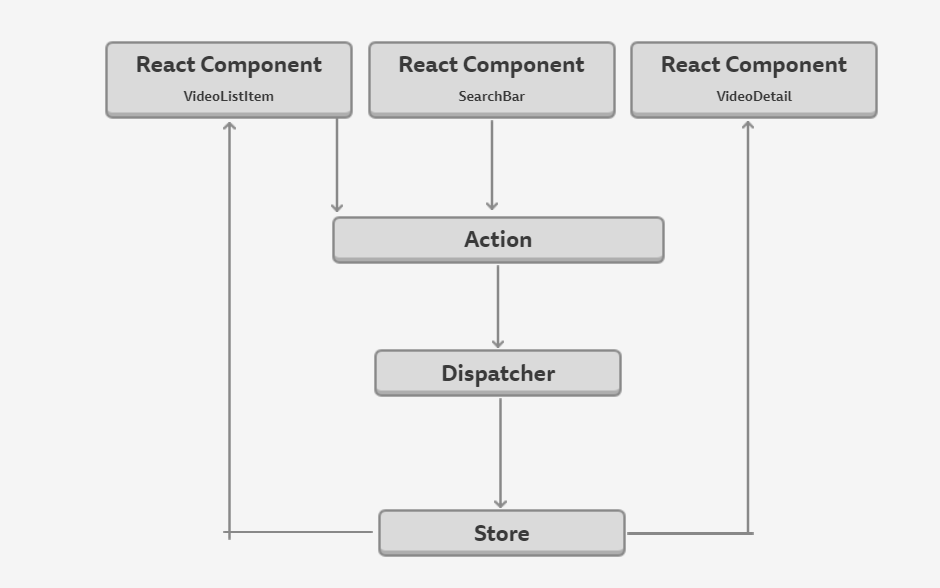 Flux flow for Youtube Player
Flux flow for Youtube Player
Now, i will be first cloning from the create youtube player repo.
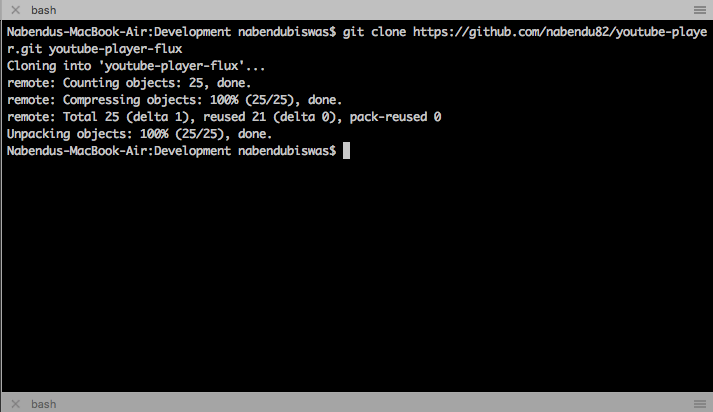 Clone exiting callback youtube-player code
Clone exiting callback youtube-player code
After that change to that directory and do a npm install.Once the npm install finishes successfully do a npm start
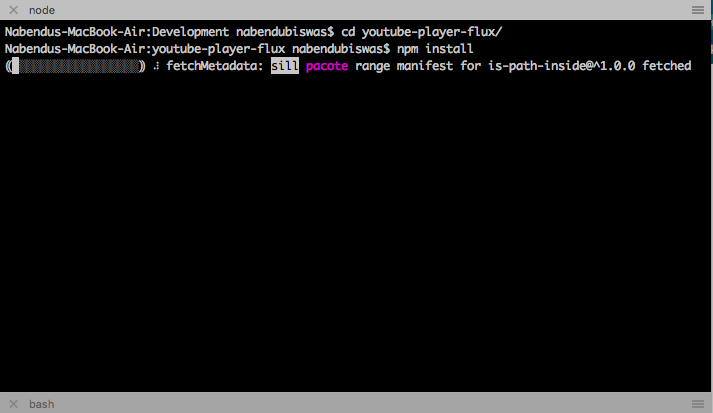 cd to directory and npm install, then npm start
cd to directory and npm install, then npm start
In Flux and other central state logic implementations, we move much of the logic out of React. It only remains as a View, which it is meant to be.
Let install flux into our project by npm install — save flux
 npm install — save flux
npm install — save flux
Now one of the main part of our youtube-player logic is to go the Async API call to youtube through youtube-search-api. We will move this logic out to our App.js to action file. We will first see the basic unidirectional flow of Flux by showing a initial search of ‘React Tutorials’. From the constructor, we the call to the action file function videoSearch(). We will create that next.
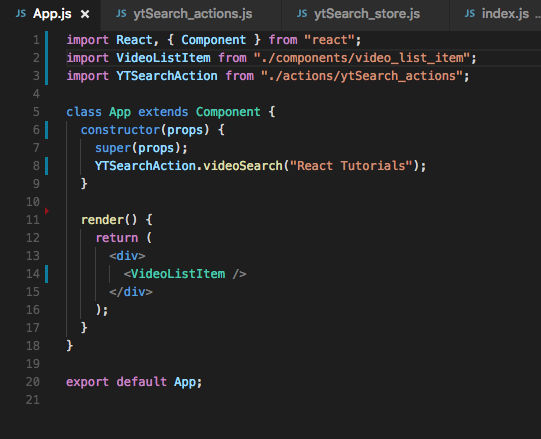 New App.js
New App.js
Now create an actions folder in src directory and a file ytSearch_actions.js inside it. This action file is doing the Async YTSearch now, with searchTearm(‘React Tutorials’ from App.js). It is receiving an array of object from youtube as a response. Then sending the same to dispatcher as an object with an identifier in actionType and the received data in payload.
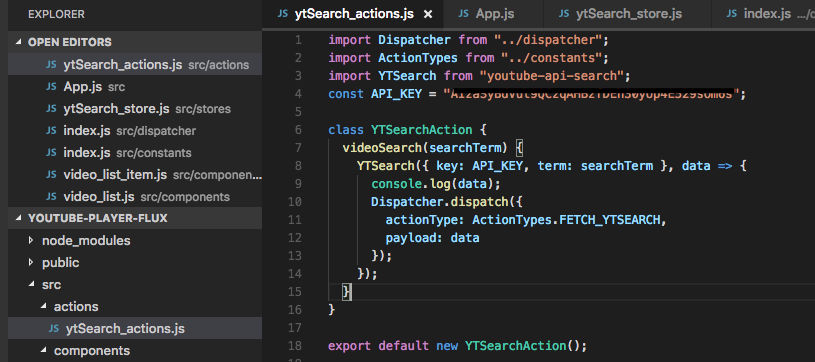 ytSearch_actions.js
ytSearch_actions.js
Also, create a constants folder and an index.js file inside it. It is used here in actions(ActionTypes.FETCH_YTSEARCH) and also will be used in store. Basically used to keep the constants maintainable.
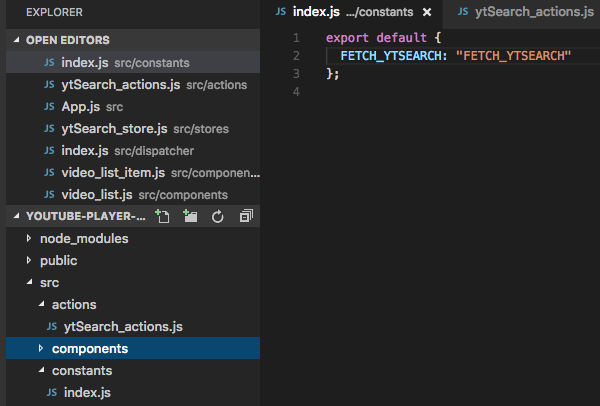 constant file
constant file
Now create a dispatcher folder and an index.js file inside it. It is just a simple file, with functionality written internally. It basically takes everything from the actions and passes it to all stores.
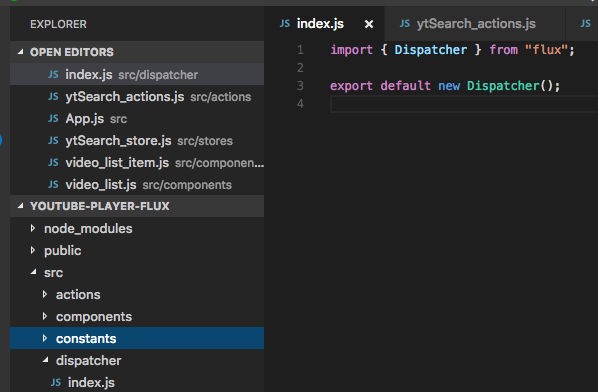 dispatcher
dispatcher
Now create a folder stores and a file ytSearch_store.js inside it. It contains the major functionality in a flux application. Here we are first importing an emitter. In the constructor, we first registering with the dispatcher as it’s gets it data from dispatcher.
The dispatcher register calls the function _registerToActions(). Inside it we have a switch statement, that checks the action type. Right now we have one only, in future we will have more. Here it agains uses the constant from the constant file. It calls the function addNewSearchItem(action.payload).
Notice the action.payload is nothing but the data from ytSearch_actions.js file. So, it’s the array of object, we received from youtube. We then call the function _addNewSearchItem(), where we assign this array of object to a local array and EMITs it. The getAllVIdeos() returns the state of this local array, which we will use later in receiving component. The next two functions addChangeListener() and removeChangeListener() will also be used in our receiving component.
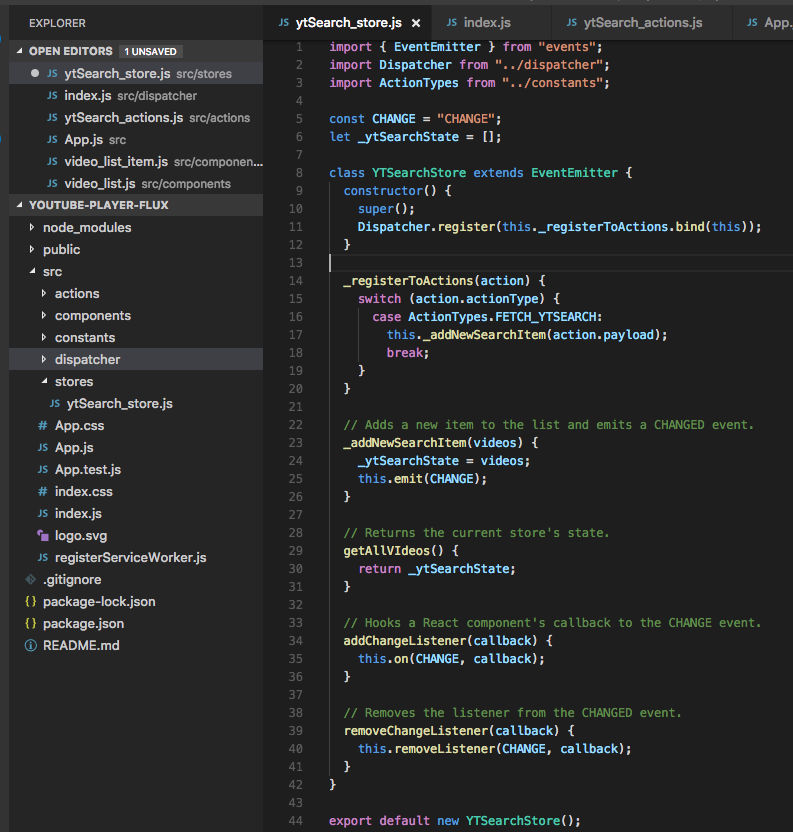 ytSearch_store.js
ytSearch_store.js
Now, we will update our receiving component video_list_item.js .Note, in this refactored flux youtube player, we don’t need the file video_list.js Here we are first importing the store. Creating a state object with items as key which calls YTSearchStore.getAllVIdeos() and gets the array of object. In constructor, a _onChange() function is also call. It sets the state variable once it receives the array of object.
This keeps on changing, once we do the search. There is react lifecycle hook componentWillMount() and componentWillUnmount(), which are used to addChangeListener() and removeChangeListener() from dispatcher. In render() method, we display the url and the title in a list through using map and iterating over.
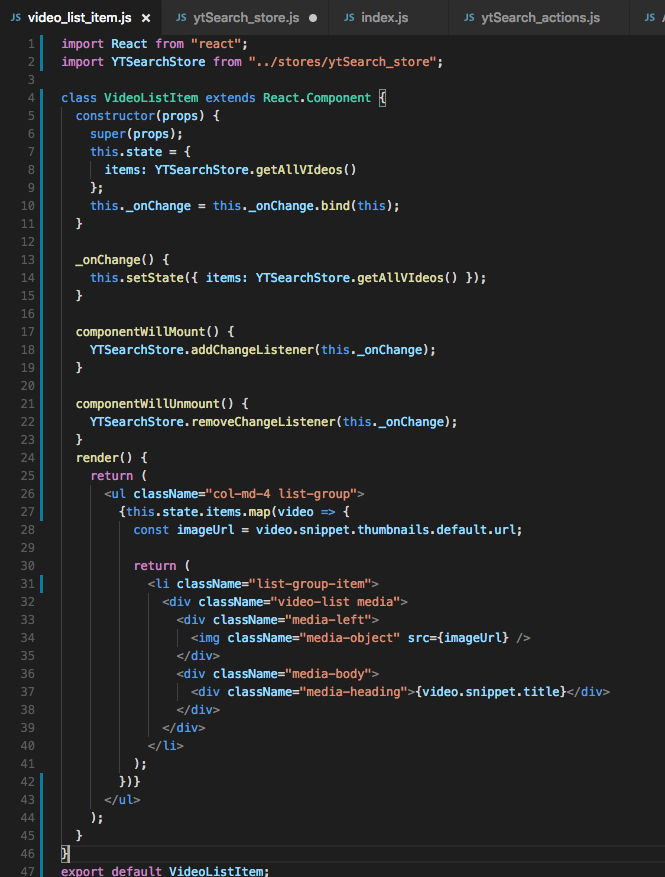 *updated video_list_item.js*
*updated video_list_item.js*
Our array of object, which we receive from youtube.
 array of object
array of object
Our list of videos from youtube is showing perfectly and this concludes Part 1.
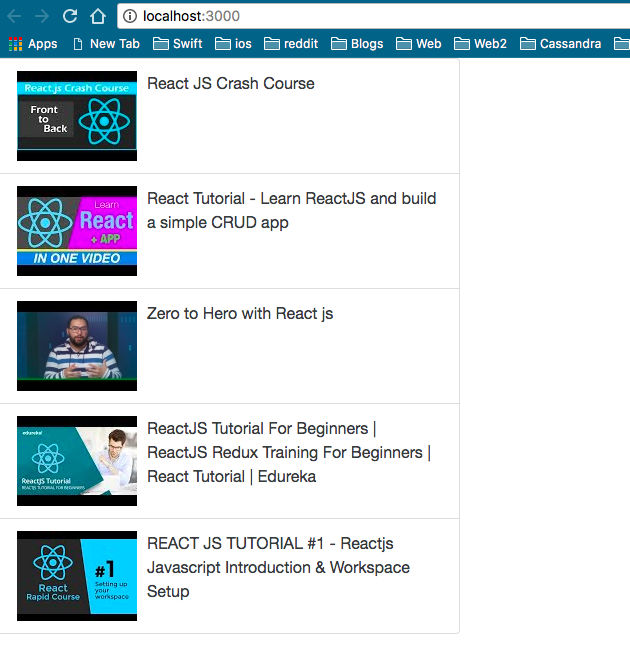 list of videos from youtube
list of videos from youtube